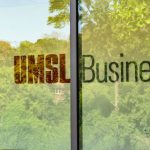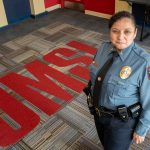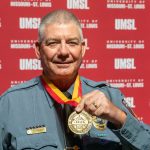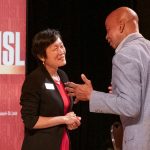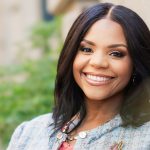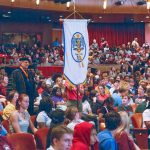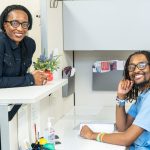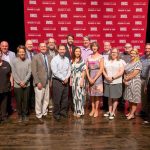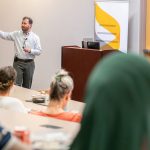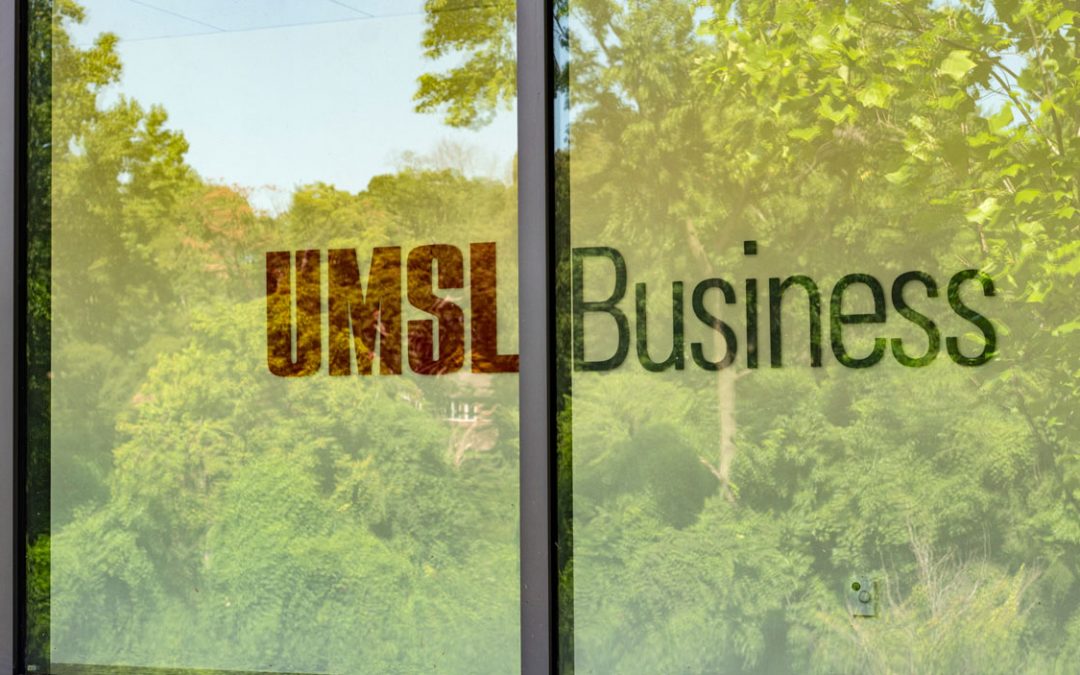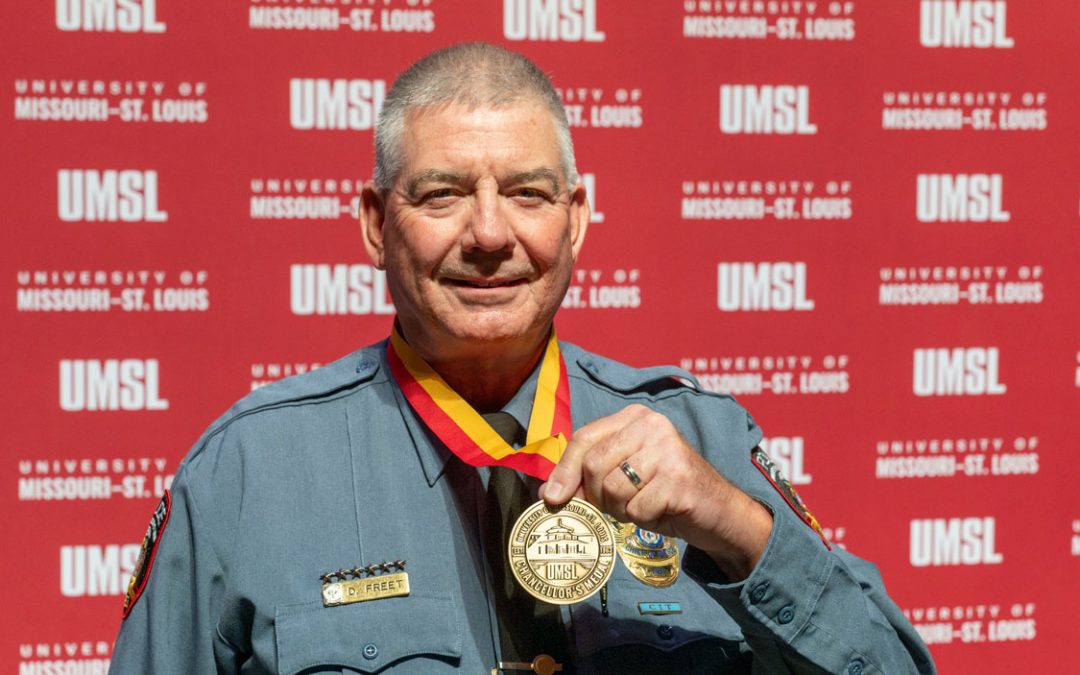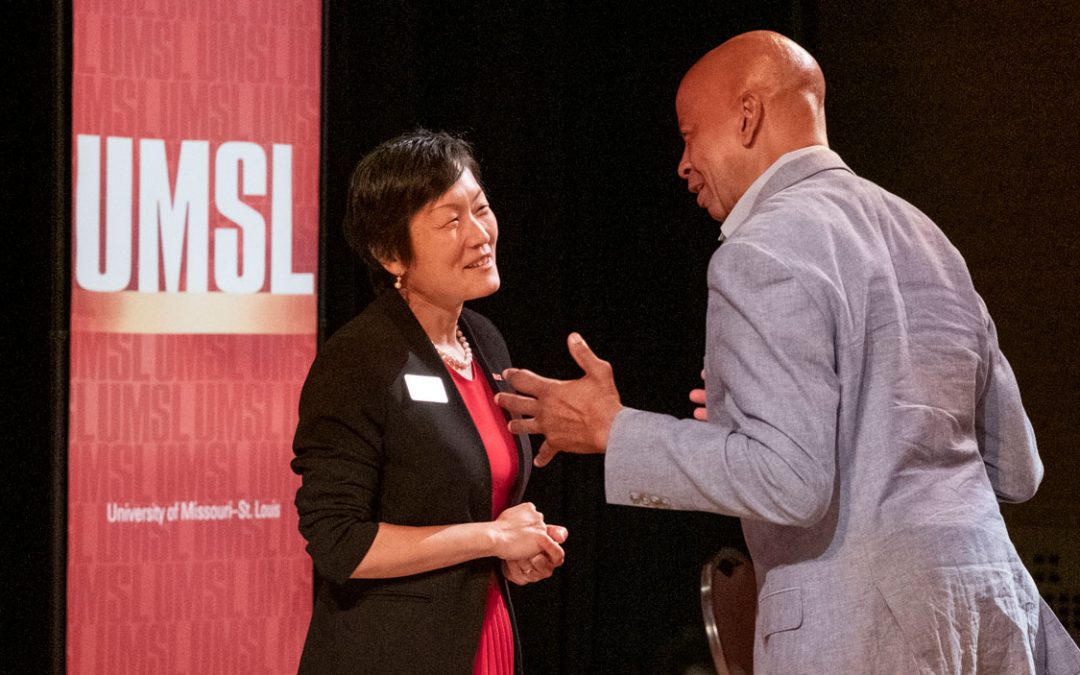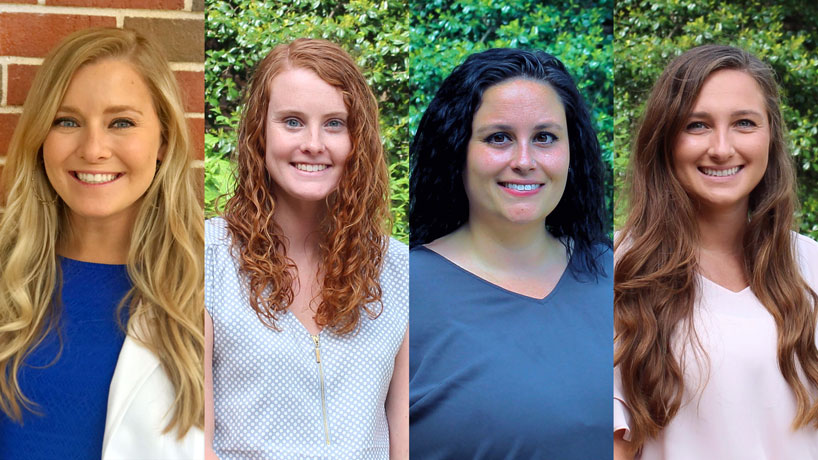
College of Optometry graduates Kathryn Schmandt, Riley Liss, Kaleigh Albers and Paige Blankenheim all did rotations at Chickasaw Nation Medical Center. (Photos courtesy of UMSL College of Optometry)
Classmates Paige Blankenheim and Kate Schmandt were coming to the end of their fourth year in the College of Optometry at the University of Missouri–St. Louis and needed to complete their rotations.
They both landed in Ada, Oklahoma – Blankenheim by choice and Schmandt by chance.
Ada is a small town of about 16,000 people in Southeastern Oklahoma. It is home to the headquarters of the Chickasaw Nation. Blankenheim and Schmandt didn’t know what to expect. And based on previous experiences in other rotations, they weren’t sure how they’d be received as interns but they were willing to take a chance.
The rotation at Chickasaw Nation Medical Center was coordinated by the Indian Health Service, a division within the U.S. Department of Health and Human Services.
Though the two weren’t sure of what to expect, the experience was better than they’d imagined.
“Everybody was super nice at the clinic and welcoming,” Blankenheim said. “All the patients were so kind to us, being interns.”
Blankenheim and Schmandt stayed in an apartment provided by the Chickasaw Nation – a nice perk compared to other out-of-state rotations that require students to pay for their own room and board.
With medical care being provided by the Chickasaw Nation, the patient treatment plan was not hampered by insurance coverage, and they were able to provide more comprehensive treatments than in other settings.
“It was awesome,” Schmandt said. “I wasn’t really sure what to expect going in, but it was in a hospital-based setting, similar to a VA, where the patients who came in didn’t necessarily need to have private insurance in order to be treated. Everyone was able to get the care that they needed – whatever tests we wanted to run. We could prescribe glasses without having to worry about what their insurance was going to cover or not cover.”
Blankenheim and Schmandt weren’t the only students who enjoyed their rotation in Ada. Kaleigh Albers and Riley Liss worked at Chickasaw Nation Medical Center as well, and for Albers, the placement was intentional.
“I chose this one,” Albers said. “It sounded cool, and I knew that I wanted to travel this year. I picked all of my rotations out of town on purpose. They communicated very well from the previous classes that it was a good one – that you learn a lot and have a good time.”
Though Albers was raring to go, Liss hadn’t considered Oklahoma and was surprised when told her rotation would be there.
“I didn’t know anything about Oklahoma,” Liss said. “Never been to Oklahoma in my life, and that was probably the thought process.”
Regardless of the students’ initial thoughts about going to Oklahoma to work for a sovereign tribal nation, they were all interested in helping an underserved community. And because First Americans have a higher occurrence of diabetes and eye disease, the experience provided them many opportunities to learn and see a higher number of complicated cases than they would in a traditional medical setting.
“I did see some severe cases of diabetes affecting their eyes, and it was really sad at some points,” Blankenheim said. “We had a retina day, where a surgeon was coming and doing injections for patients . It was mainly from diabetes, and so those days were challenging. To see people so young have issues from diabetes, that was really challenging. I feel like there was more prevalence there.”
Liss also saw the impact that residing in an underserved community has on health.
Because health services can be difficult to access in the area, the service provided by the interns is greatly valued by the patients and optometry clinic. Blankenheim noted that patients are generally more tolerant of appointments that take more time than those in a private optometry practice. They are so happy to receive the medical care they need.
Amy Lane, who manages the optometry clinic, also appreciates the UMSL interns.
“We’re so excited to have them,” Lane said. “When we get them right before graduation, it’s great to have them before they embark upon becoming a full-time optometrist. The doctors really enjoy teaching them, and it’s also a great recruiting tool.”
There have been interns who’ve returned to the clinic after their rotation to work full-time.
UMSL alumna Candis Clark, who worked with the latest round of UMSL interns, did a rotation at the Chickasaw Nation Medical Center as a student and was recruited for a full-time job after graduating in 2018.
“We kept our eye on her during her rotation, and when there was an opening, we had her in mind,” Lane said. “She was great with the patients.”
Schmandt has kept the Chickasaw Nation Medical Center in mind and would happily return.
“Again, just the way they’re able to practice, it really makes sense to me, and that’s kind of my preferred style,” Schmandt said. “After my fourth year of clinical experience, that’s really what I enjoy, so I would absolutely go back.”


